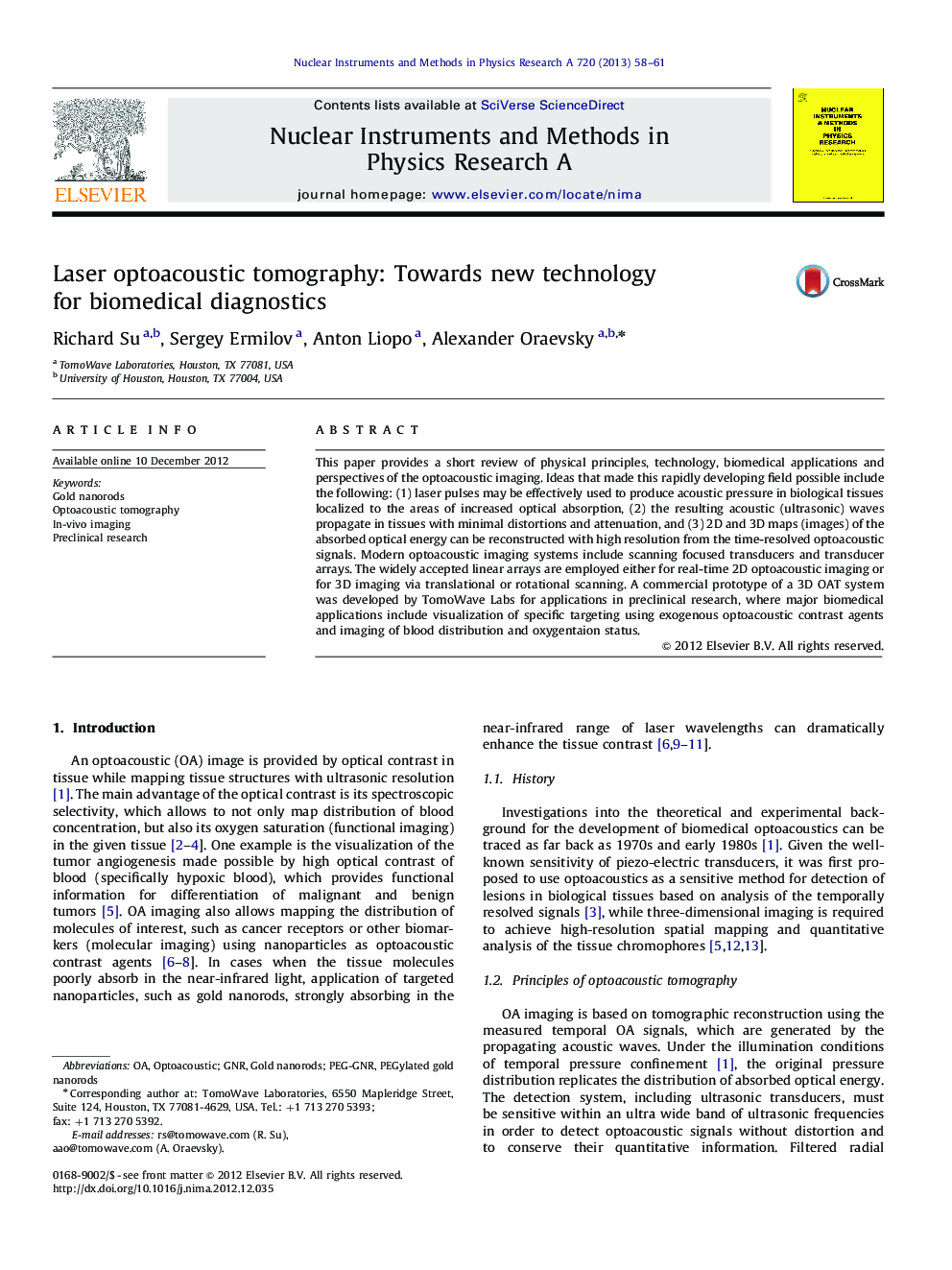| Article ID | Journal | Published Year | Pages | File Type |
|---|---|---|---|---|
| 1822938 | Nuclear Instruments and Methods in Physics Research Section A: Accelerators, Spectrometers, Detectors and Associated Equipment | 2013 | 4 Pages |
Abstract
This paper provides a short review of physical principles, technology, biomedical applications and perspectives of the optoacoustic imaging. Ideas that made this rapidly developing field possible include the following: (1) laser pulses may be effectively used to produce acoustic pressure in biological tissues localized to the areas of increased optical absorption, (2) the resulting acoustic (ultrasonic) waves propagate in tissues with minimal distortions and attenuation, and (3) 2D and 3D maps (images) of the absorbed optical energy can be reconstructed with high resolution from the time-resolved optoacoustic signals. Modern optoacoustic imaging systems include scanning focused transducers and transducer arrays. The widely accepted linear arrays are employed either for real-time 2D optoacoustic imaging or for 3D imaging via translational or rotational scanning. A commercial prototype of a 3D OAT system was developed by TomoWave Labs for applications in preclinical research, where major biomedical applications include visualization of specific targeting using exogenous optoacoustic contrast agents and imaging of blood distribution and oxygentaion status.
Related Topics
Physical Sciences and Engineering
Physics and Astronomy
Instrumentation
Authors
Richard Su, Sergey Ermilov, Anton Liopo, Alexander Oraevsky,
